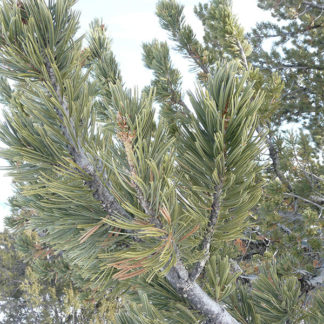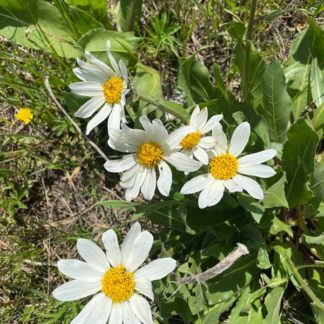dramatic
Showing 25–32 of 32 results
-

Penstemon palmeri / Palmer’s penstemon
- very tall, exposed
- pink flowers with rose/grape scent
- flowers clumped on one side of stem in groups of 4-5
- red "guidelines" (bloody fangs) on lower petals
- stem leaves opposite, clasping, like little boats
-

Phalaris arundinacea / reed canarygrass
- large, coarse, erect grass
- long, flat blades with pointy tips... from base
- distinct ligule—membranous and long
- large but compact inflorescences (panicles)
- often in dense monocultures, e.g. on river banks
-

Pinus flexilis / limber pine
- high elevation, rocky or talus, dry, high-stress habitat
- often - stunted and deformed by wind
- highly flexible branches
- needles in bundles (fascicles) of 5
- often - semi-rotted cones on ground below
-

Primula parryi / Parry’s primrose
- striking, bright magenta (or pink) flowers with yellow centers, 5 petals
- 3 to 30 flowers per stalk
- brilliant green foliage as a rosette
- foliage releases horrible smell with the slightest touch
- typically at higher altitudes in wet places
-

Pseudotsuga menziesii / Douglas fir
- persistent cones with distinctive 3-pronged, "mouse tail", bracts
- semi-pointy, but not stiff or sharp, single needles
- needles attached to twigs by petioles (no pegs)
- oval leaf scars
- twig buds are pointy, "lustrous" brown
-

Solidago canadensis / goldenrod
- large sprays of yellow flowers in late summer and fall
- often tall and in large colonies
- lance-shaped, toothed leaves
- mostly (but not always) in disturbed areas
-

Veratrum californicum / California false hellebore
- huge inflorescence covered with one-inch-plus flowers
- six white tepals with green centers
- moist areas, possibly very dense stands
- foot-long, heavily veined, pleated bright green leaves
-

Wyethia helianthoides / white mule’s ears
- large, white-rayed flowers - like daisies
- large leaves, reminiscent of mule's ears
- uncommon but in huge profusion when it is found
- in wetlands or wetter meadows and especially in the spring.
Showing 25–32 of 32 results